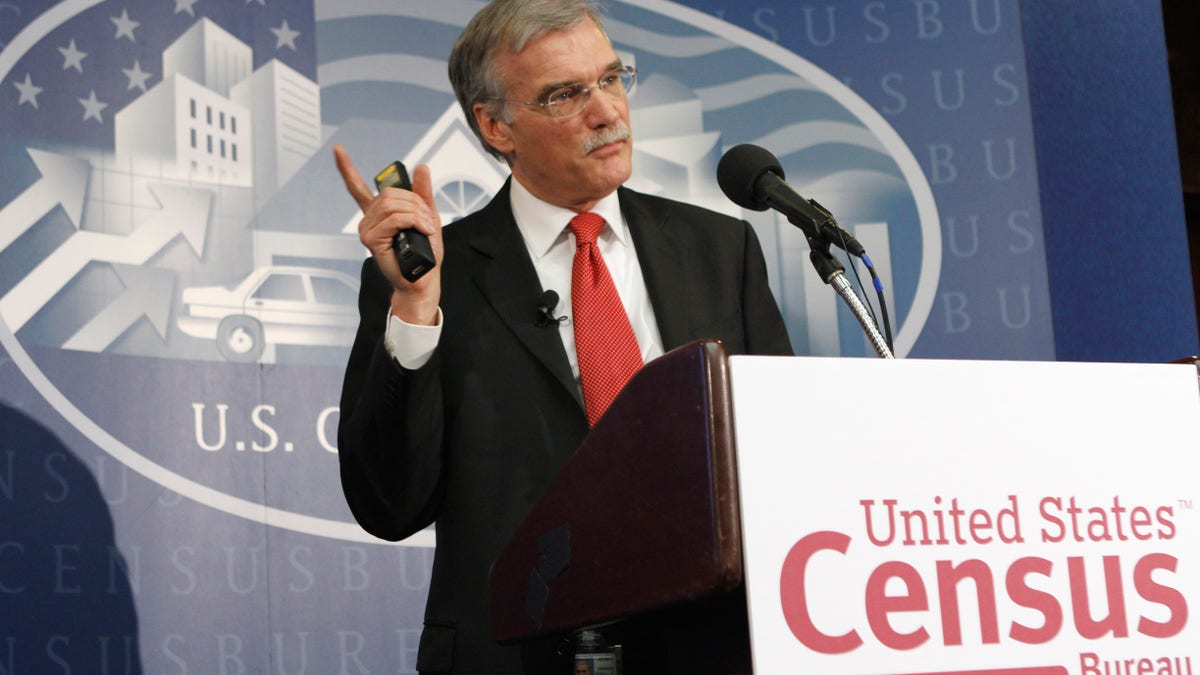
U.S. Census Bureau Director Robert Groves, March 24, 2011. (AP) (AP2011)
America’s Hispanic population is growing faster and spreading farther than previously assumed according a new report from the 2010 Census.
“The Hispanic population crossed the 50-million mark in 2010,” Nicholas Jones, Chief of the Racial Statistics Branch Population Division at the US Census Bureau, said. “And people of Hispanic origin now clearly represent the second largest group in the country with 16% of the total U.S. population.”
Hispanics had moved into the number-two slot after the 2000 Census with 12.5 percent of the population. But the growth rate – more than 15 million new residents – far outstripped past projections. Demographers were also surprised by the large increase in Hispanic populations in southern states that had previously small Latino communities. North Carolina and Alabama saw the largest percentage increases of any states.
Officials say the Census does not differentiate between legal and illegal residents.
Non-Hispanic whites are still the nation’s largest group, comprising 64 percent of the population, but that's down from 69 percent 10 years ago. And blacks are still the third largest group at 12.2 percent, about the same as a decade ago.
With the 2012 elections looming, many Democrats are encouraged to see the rapid growth in Hispanic population, an ethnic group that favored Barack Obama by two-to-one margin in the 2008 election according to exit polls. And current polls show that Obama maintains a healthy job approval rating among Hispanics -- 20 points higher than the population at large in some polls.
But there are suggestions that the rise in Hispanic population poses some long-term challenges to Democrats, too.
Michael Barone, senior political analyst for The Washington Examiner and the author of the “Almanac of American Politics,” says while black voters tend overwhelmingly favor Democrats, Hispanic voters are less united.
Barone said that the strength of Democrats among Hispanics may be a function of geography, not just ethnic identity.
“Hispanics in California are very Democratic. It's a state where white voters also tend to be Democratic,” Barone said. “Hispanics in Texas tend to be less Democratic…and you have states like Florida where Hispanics are voting majority Republican.”
The number of Asians in the U.S. also has increased dramatically in the past 10 years. Asians make up about 5 percent of the total population, but as an ethnic group, they have grown nearly 43 percent from the last census
The 2010 Census also reveals a shift in the nation's population center. That is, the geographic point where, if you can imagine it, the country would balance based on how many people are living where in the US.
It shifted 30 miles southwest to a spot near Plato, Missouri.
And that population center may continue to move into Arkansas or Oklahoma by mid-century, census experts predict, based on current population trends in the South and West.
“Together those two regions contain nearly 85 percent of the country’s entire population growth this past decade,” said Robert Groves, director of the U.S. Census Bureau.




